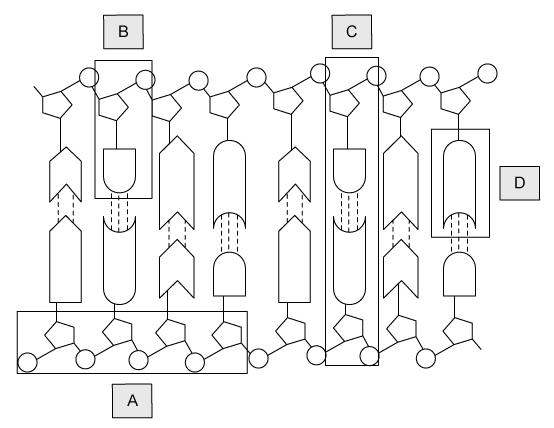a)
In a section of DNA 17 % of the nucleotides were found to contain cytosine.
Calculate the percentage of thymine in this section of DNA.
[2 marks]
b)
State one reason why the calculation from part a) could not be performed for a piece of RNA.
[1 mark]
c)
The diagram below shows a representation of part of a DNA molecule.

Identify the structures labelled A, B, and D.
[3 marks]
d)
Identify one type of bond found within the structure labelled C in the diagram at part c).
[1 mark]
a)
State the purpose of DNA replication.
[1 mark]
b)
The diagrams below show two models of DNA replication.

State, with a reason, which diagram, A or B, is correct.
[2 marks]
c)
Identify two enzymes that are involved with the process of DNA replication.
[2 marks]
d)
Calculate the fraction of a cell’s original DNA that will be present after 3 full cycles of DNA replication.
[2 marks]
a)
Both DNA and RNA contain pentose sugars in their sugar-phosphate backbones.
Define the term pentose in reference to sugar molecules.
[1 mark]
b)
During DNA replication the new bases are added to the new strand by the enzyme DNA polymerase in the 5' to 3' direction.
Use your knowledge of enzymes to explain why it would not be possible for DNA polymerase to add the new bases in the 3' to 5' direction.
[2 marks]
c)
When bases are bonded to the new DNA strands during replication they undergo a condensation reaction.
Describe the events that occur during a condensation reaction.
[2 marks]
d)
In a length of DNA 1 000 nucleotides long there are 382 guanine nucleotides in one of the strands.
Explain why it is not possible to calculate the number of guanine nucleotides in the opposite strand from the information provided.
[2 marks]



